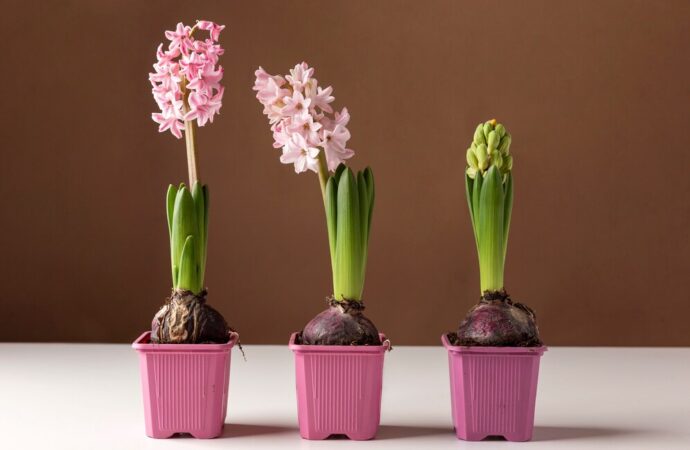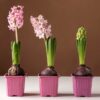If you are here, you may want to get into gardening. Growing plants is not just the easy way to start this hobby but also the cheapest way to fill your garden with abundance. Some people may think of growing vegetables and fruits, but growing flowers is easy to start with. So, how to grow
If you are here, you may want to get into gardening. Growing plants is not just the easy way to start this hobby but also the cheapest way to fill your garden with abundance. Some people may think of growing vegetables and fruits, but growing flowers is easy to start with.
So, how to grow flowers from seeds? As a beginner, you will need at least a basic knowledge of planting which we will cover in this blog post, along with caring and harvesting. So if you have been dreaming of setting up your garden, grab some seed packets and get started with the tips below.
How To Plant
Obviously, planting is the first step to understanding how to grow flowers from seeds. It does not only include sowing the seeds and watering them daily until it grows but also some techniques you need to follow to grow a healthy plant.
Annual flowers: Most annual flowers are easy to grow because they will seed themselves, and all you need to do is leave the flower head on the plants by the end of the season. Remember, annual flowers proliferate and can start from seed indoors or be directly sown outside in the spring. Many annuals that self-sow are also good candidates for starting from seed.
Perennial flowers: On the other hand, it’s not the case with perennial flowers; you need to be patient while growing them. Most perennial plants bloom in their second year while spending the first establishing a solid root system and growing leaves before they begin to bloom. Once they are established, they will continue to grow and bloom annually. And after a few years, you can make more plants by dividing the ones you have.
Sounds easy? Yeah, but the true challenge lies in deciding when and where to plant. Let’s cover it in more detail.
When to plant?
If you are planting an annual plant, first determine whether it’s tender or hardy. Generally, the best weather to grow plants is a dry or light rainy day. Avoid seeding on hot days or heavy rainy days, and make sure there is no chance of night frost.
Hardy annuals can withstand cold temperatures and be planted in late autumn or early winter. They will germinate through the winter and bloom in the spring. In contrast, tender annuals are not as cold-tolerant. They should be planted at least six weeks after the last spring frost date, typically in late spring. It’s also important to check the seed packets for specific information on plant suitability for your hardiness zone.
Soil Preparation
Use a rake or pitchfork to dig 6 to 8 inches under the soil. Turn the soil over until the top layer is loosened. Remove any weeds and give them a smooth texture, free of clots and stones. If you are going to grow a wide variety of plants, you can mark the soil where you want to seed your plant by drawing the lines above.
Fertilizing
You can incorporate compost or manure into the soil to promote flower growth. It’s preferable in winter, or at least no later than April, to give the worms, birds and rain time to work it into the soil. When you add manure to the soil, it may become excessively acidic, harming tender seedlings. It’s always important to check the pH level and adjust it before planting any seedlings.
Watering
The soil must remain moist for the process of seed germination. Therefore, a wet climate is ideal for this period, so it’s not necessary to water plants, as the rain will provide enough moisture for the plants. However, if there is a period of dry weather, it is essential to water the plants so that the soil remains moist to a depth of 6-8 inches. This will help the plants to absorb the water and grow properly.
Also, It is not recommended to use a garden hose or watering bucket to irrigate newly planted seeds, as the force of the water can wash the seeds away or bury them too deep. Instead, use a fine mist sprayer to water the seeds gently.
Sowing
Generally, the seed packet has information on How to grow flowers from seeds. Different types of seeds vary for germination.
If your seeds are large enough, you can press them one by one, 1 to 2 centimetres deep. But if your seeds are tiny, you can sprinkle them over the desired area and press them lightly into the soil.
How To Care
Taking good care of the seeds after planting is crucial for the successful germination and growth of the plants. Following are all the precautionary steps you should take:
Weeding
Weeds can compete with your flowers for nutrients, water and sunlight, which can cause your flowers to grow poorly or even perish. So, carefully check and remove weeds regularly by hand or with a small hoe.
Watering
To form roots, seeds require slightly damp soil. Don’t let the soil get soggy, but make sure it stays moist. Avoid over-watering as it can lead to seed rot or fungal growth.
Additionally, Watering your plants in the morning or evening is generally considered the best practice to prevent sun-induced leaf burn and to give the soil and plants enough time to absorb the water.
Support
Some plants grow taller and require additional support to help them grow upright and healthy. One method for providing support is to create a grid out of wire netting and posts before sowing the seeds. By doing so, the plants can climb up the netting as they grow. You can also put wooden stakes between the plants if you want to add support.
How To Harvest
Many plants will grow and develop new branches and buds when flowers are harvested frequently. In other words, this is known as deadheading or removing spent blooms. Deadheading helps to promote reblooming, which can extend the flowering period of many plants.
When cutting flowers in your garden, it’s essential to use clean, sharp tools such as a knife or pruning shears. This helps to ensure a clean cut, which can help to prevent damage to the plant and promote healthy growth.
Tips For Gardeners
If you are interested in making a blooming garden, consider the following tips:
- If you want a more extended harvest period, sow your seeds twice or three times in a row.
- When you seed, consider the height and width of your plants.
- Pre-sowing, or starting seeds indoors before transplanting them outside, is an excellent idea if you want your plants to flower sooner in the summer.
- You may be able to start seeding earlier if you live in a milder climate; if you live in a colder climate, wait until it gets warmer before you start.

















Leave a Comment
Your email address will not be published. Required fields are marked with *